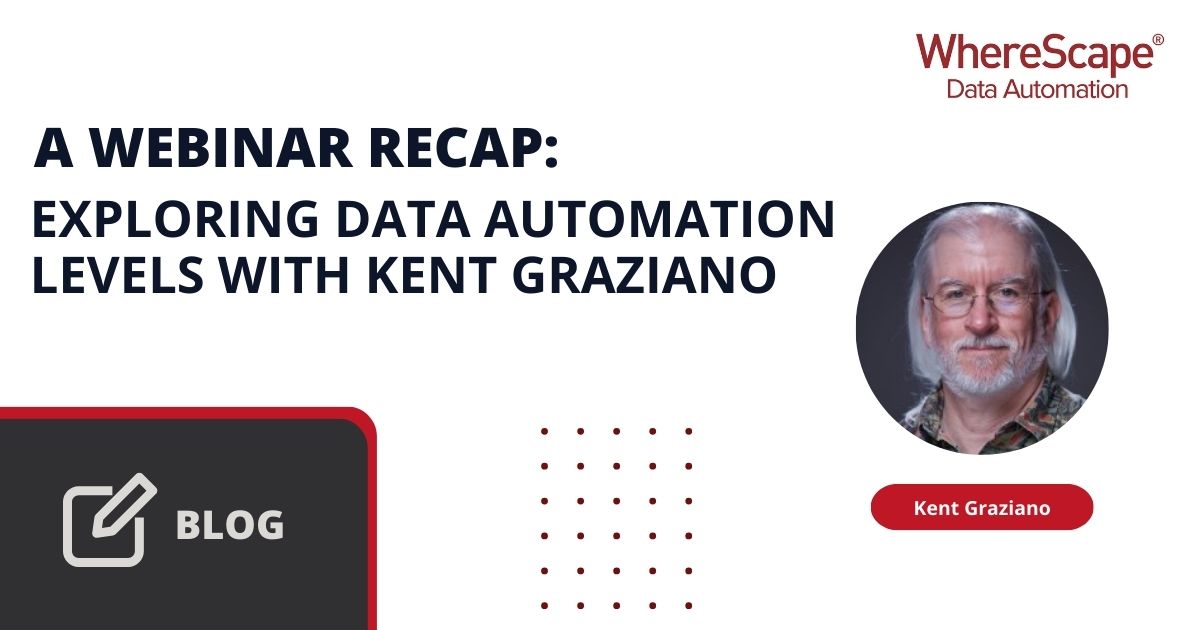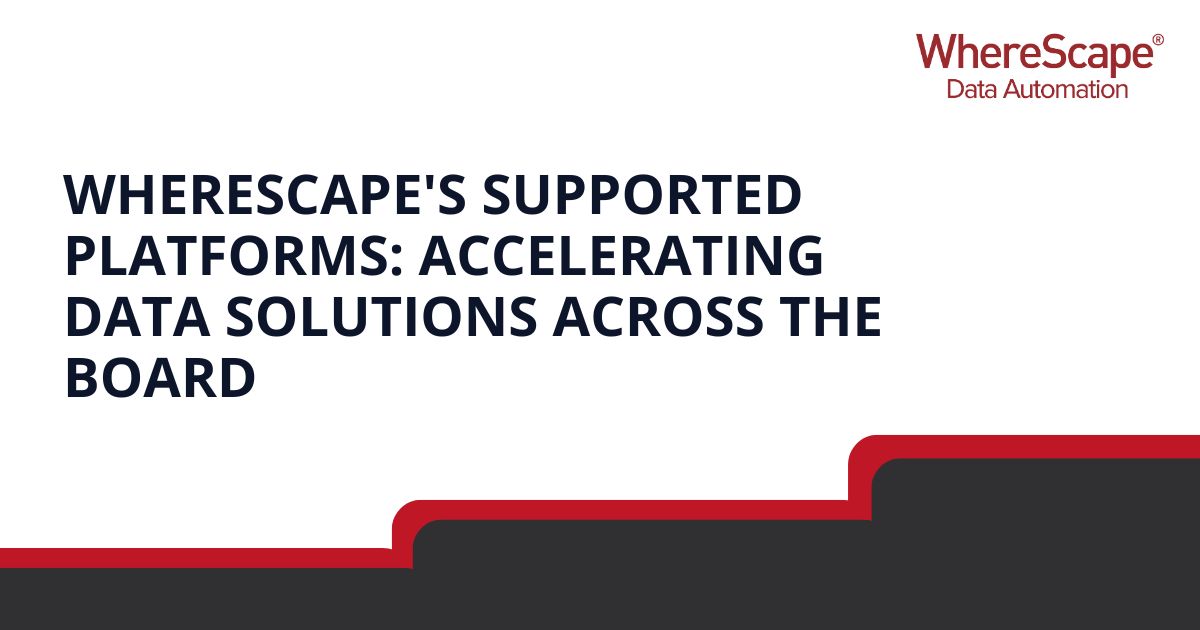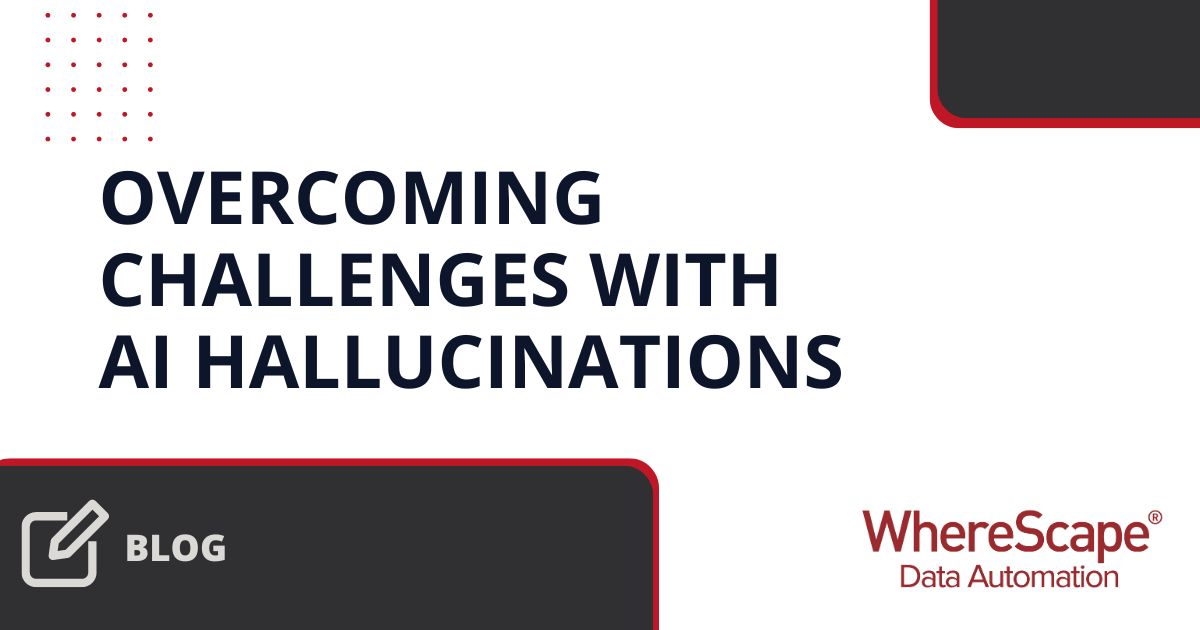Are you struggling to keep up with the...
Building a Data Warehouse
Over this series of four posts, I explore the keys to a successful data warehouse. Last time, I started with design—a reasonable place to begin! The topic of this post is build, with operation and maintenance to follow.
Even with a beautiful design model in your mind’s eye, the question of how to build a data warehouse raises its ugly head! Ugly because no matter how lovely the model, implementation is always hobbled by the less than perfect reality of the data source systems. In the words of an old Irish joke in reply to a request for directions: “if I wanted to go there, I wouldn’t start from here.” Since the earliest days, builders of data warehouses have struggled with missing data in source systems, poorly defined data structures, incorrect content, and missing relationships, to name but a few. Implementation, therefore, becomes a delicate balancing act between the vision of the model and the constraints of the sources. In simplistic terms, the process comes down to the following steps.
Building a Data Warehouse
1. Data Sources
Often described as data archeology, this step presents major challenges, especially for legacy systems, which—even if originally well documented—have usually been “bent to fit” emerging and urgent requirements. Modern big data sources may be equally challenging as a result of poor or absent documentation.
2. Compare Data
Compare the data available to the data warehouse model and define appropriate transformations to convert the former to the latter.
3. Data Warehouse Model
Where transformations are too difficult, modify the data warehouse model to accommodate the reality of the data sources. Changing the data sources—which would be the right answer when they are in error—is usually impossible for reasons of cost, politics, or both.
4. Test Performance
Test performance of load/update processes and check ability of modified model to deliver the data needed by the business.
5. Iterate Improvements
If successful, declare victory. Otherwise, rinse and repeat.
Data Warehouse Automation
Traditionally, the output of the above process would be encoded in a script or program and run—typically overnight in batch—to populate the warehouse. Any changes in requirements or, more problematically, in the source systems (beyond the control of the data warehouse developers) required a round trip back through steps 1 to 5, followed by code update. The approach is manual, time-consuming, and error-prone.
The solution over the years has been to automate the process in a series of approaches: ETL (extract, transform, load) tools, data integration systems, and latterly, data warehouse automation (DWA). In essence, each step on this journey depicts an increasing level of automation, with DWA designed to address the entire process of design, build, operation, and maintenance.
WhereScape RED
In the transition from design to build, the combination of a well-structured data model and a DWA tool such as WhereScape® RED offers a particularly powerful approach to automation. This is because the data model provides an integrated starting set of metadata that describes the target tables in both business terms and technical implementation. This is particularly true in case of the Data Vault model, which has been designed and optimized from the start for data warehousing.
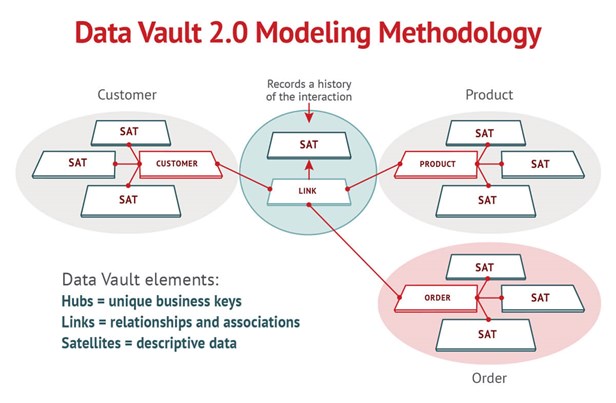
Consider, for example, the business need to analyze orders by value and geographical source. To the business person, order seems a simple, straightforward concept. In modeling terms, of course, it consists of a rather complex combination of entities, including product and person/customer. The structure to be built is equally intricate in terms of tables and the relationships between to them. The Data Vault model provides a database template for that structure, mapping directly from the business entities to a best practice set of data elements—from tables and columns through to relationships to indexes.
WhereScape Data Vault Express
A DWA tool automates the transformation of the data structures of the various sources to the optimized model of the Data Vault and populates the target tables with the appropriate data, creating necessary indexes, and cleansing and combining source data to create the basis for the analysis needed by the business. WhereScape® Data Vault Express™ provides the underlying templates to automatically and quickly build all the required structures (tables, indexes, etc.) and processes (ETL code) without manual programming and optimized for the chosen implementation platform, such as Teradata, Oracle, Microsoft, etc.
But, it’s about more than automating programming. In the future, Data Vault Express plans to address further build-time elements, including the methodology and best delivery practices defined by the Data Vault community, to avoid design errors and support proper auditing and management of the warehouse environment. That leads us to part three of this series.
You can find the other blog posts in this series here:
- Week 1: Designing a Data Warehouse
- Week 3: Operating a Data Warehouse
- Week 4: Maintaining a Data Warehouse
Dr. Barry Devlin is among the foremost authorities on business insight and one of the founders of data warehousing, having published the first architectural paper on the topic in 1988. Barry is founder and principal of 9sight Consulting. A regular blogger, writer and commentator on information and its use, Barry is based in Cape Town, South Africa and operates worldwide.
A Webinar Recap: Exploring Data Automation Levels with Kent Graziano
Our most recent webinar, "The Future of Data Warehousing: Understanding Automation Levels," hosted by Patrick O'Halloran, Solutions Architect, and esteemed guest speaker Kent Graziano dove into the transformative world of data warehouse automation. They discussed its...
WhereScape’s Supported Platforms: Accelerating Data Solutions Across the Board
The Future of Data Warehouse Automation with WhereScape Data warehouse automation represents a transformative shift in how businesses manage and utilize their data. WhereScape is at the forefront of this movement, offering tools that automate code generation,...
Overcoming Challenges with AI Hallucinations
Conversing with your digital assistant on your smartphone, using facial recognition for security, traveling in autonomous vehicles, or browsing recommended products based on your search history - there is no denying AI is embedded in many aspects of our lives. AI has...
Navigating Data Governance with WhereScape 3D
Properly managing and organizing data allows businesses to not only understand crucial patterns and trends, but also to leverage that data in strategic ways that grow revenue over time. Data drives decision-making and paves the way for innovation when used properly....
Deep Dive into WhereScape RED: Features and Benefits
Transforming a business’s various databases and files into actionable insights and reports is crucial, but incredibly time-consuming with traditional tools. Fortunately, with data warehouse automation tools like WhereScape RED, organizations can take advantage of a...
Brief Insights from Gartner® Latest Report on Data Fabric and Data Mesh
In the rapidly evolving world of data management, distinguishing between the myriad of strategies and technologies can be daunting. The latest Gartner® report, "How Are Organizations Overcoming Issues to Start Their Data Fabric or Mesh?" provides critical insights...
ETL vs ELT: What are the Differences?
In data management, the debate between ETL and ELT strategies is at the forefront for organizations aiming to refine their approach to handling vast amounts of data. Each method, ETL vs ELT, offers a unique pathway for transferring raw data into a warehouse, where it...
Embracing the Future of Data Management Recap: Insights from Mike Ferguson
In our recent webinar, "Embrace the Future of Data Management with Automated Cloud Data Warehousing," we had the privilege of diving into the transformative world of cloud data warehousing and highlighting the pivotal role of automation. Guided by our own Brad Kloth,...
How to Hire and Retain Data Warehouse Developers
The projected data warehouse developer job growth rate is 21% from 2018-2028, with about 284,100 new jobs for data warehouse developers projected over the next decade, according to Zippia. This surge in demand for data warehouse talent is being felt across businesses...
8 Reasons to Make the Switch to ELT Automation
Extraction, loading, and transformation (ELT) processes have been in existence for almost 30 years. It has been a programming skill set mandatory for those responsible for the creation of analytical environments and their maintenance because ELT automation works....
Related Content
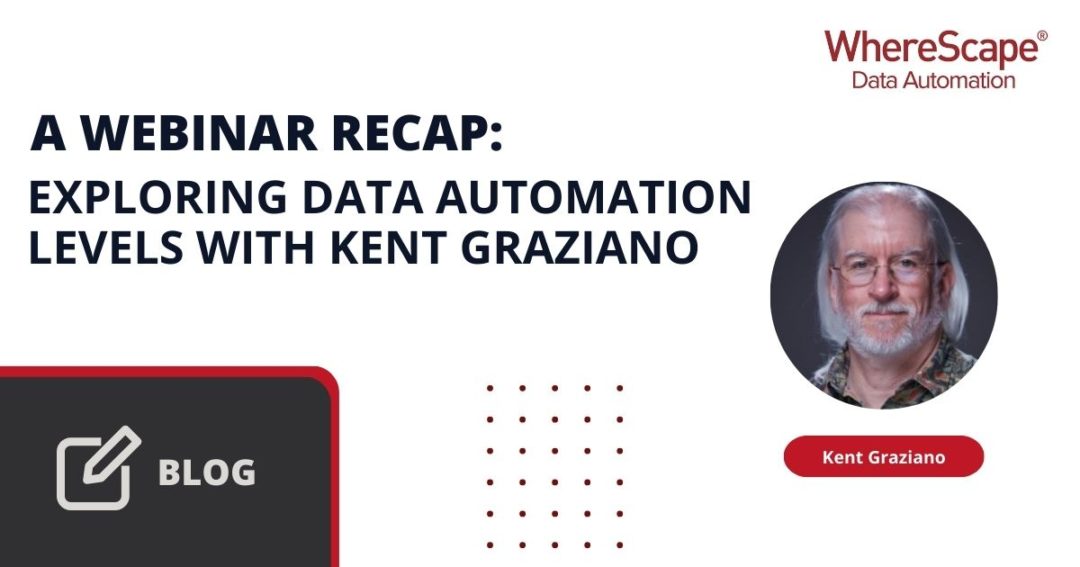
A Webinar Recap: Exploring Data Automation Levels with Kent Graziano
Our most recent webinar, "The Future of Data Warehousing: Understanding Automation Levels," hosted by Patrick O'Halloran, Solutions Architect, and esteemed guest speaker Kent Graziano dove into the transformative world of data warehouse automation. They discussed its...
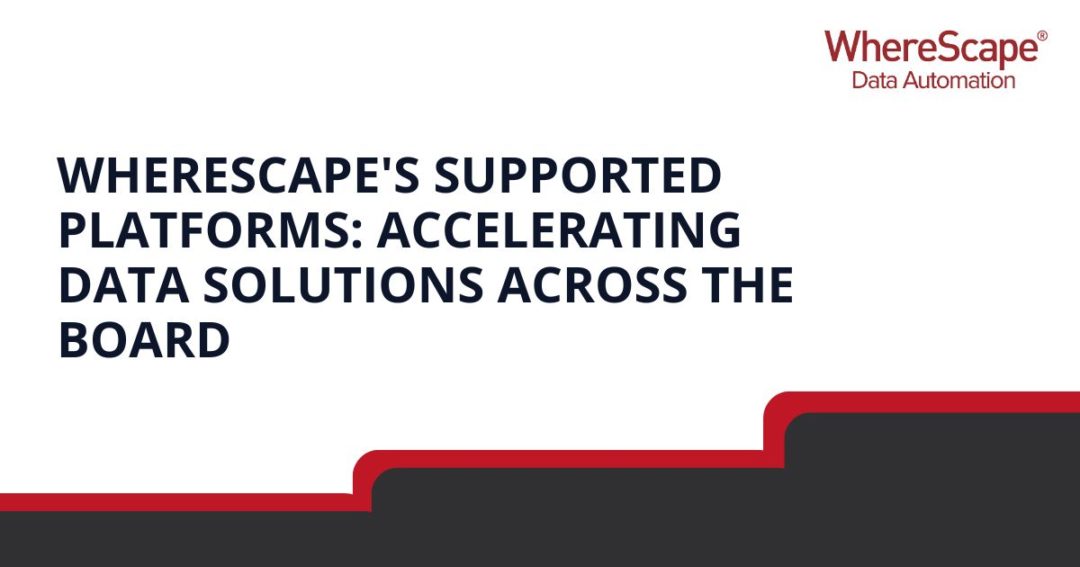
WhereScape’s Supported Platforms: Accelerating Data Solutions Across the Board
The Future of Data Warehouse Automation with WhereScape Data warehouse automation represents a transformative shift in how businesses manage and utilize their data. WhereScape is at the forefront of this movement, offering tools that automate code generation,...
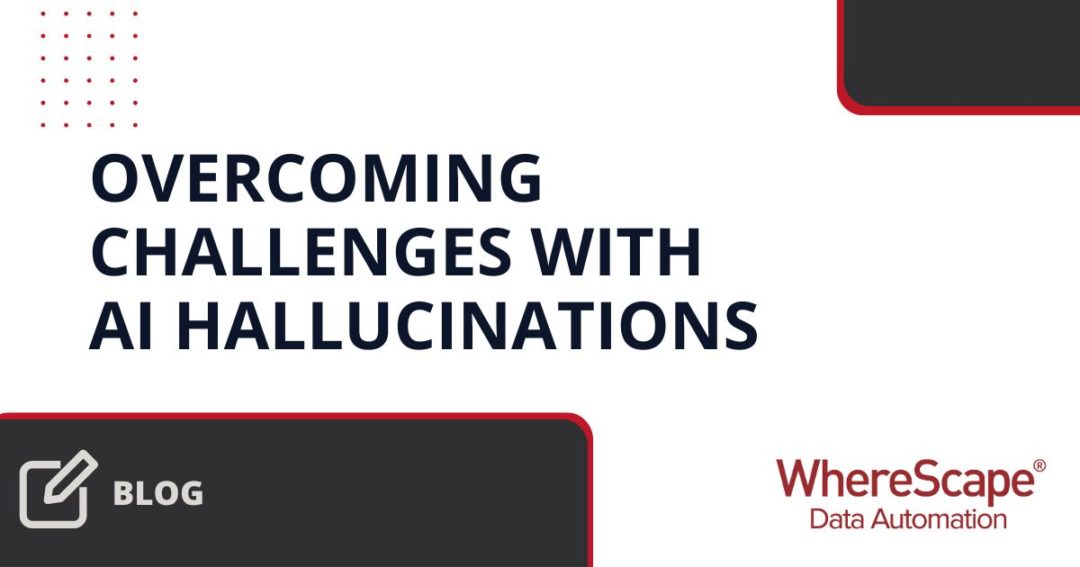
Overcoming Challenges with AI Hallucinations
Conversing with your digital assistant on your smartphone, using facial recognition for security, traveling in autonomous vehicles, or browsing recommended products based on your search history - there is no denying AI is embedded in many aspects of our lives. AI has...
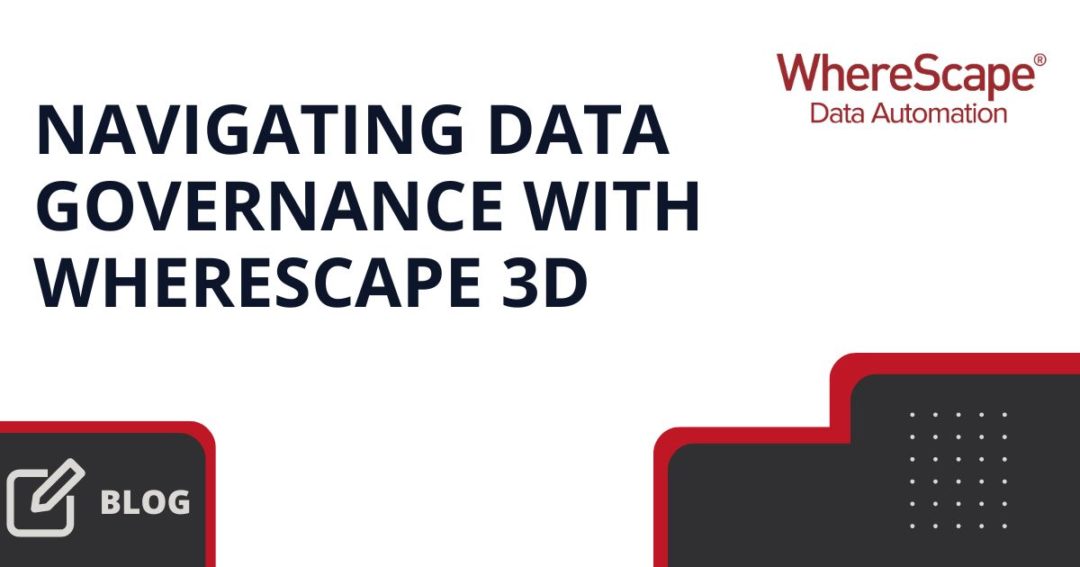
Navigating Data Governance with WhereScape 3D
Properly managing and organizing data allows businesses to not only understand crucial patterns and trends, but also to leverage that data in strategic ways that grow revenue over time. Data drives decision-making and paves the way for innovation when used properly....


